Caterpillars, or larvae, are living growbags with serious ambition. They eat the leaves of a variety of different plants almost to bursting point, then pupate, turning into a chrysalis, within which the adult insect slowly develops through metamorphosis into a butterfly or moth.
Caterpillars have many enemies – predators and parasites. Some make themselves toxic by eating poisonous plants, have deterrent spines or warning colours. Many, though, rely on camouflage and wariness. A great many get eaten.
In this guide, we take a closer look at UK caterpillars, revealing 12 common types to look out for in the countryside and in your garden, as well as what they eat and whether they're poisonous.
Interested in learning more about insects in the UK? Check out our guides to beetles, grasshoppers and dragonflies.
Butterfly guide
Britain is home to roughly 60 species of butterfly, which all play an important role in pollination. In our guide to butterflies, we take a look at butterfly identification, common butterfly species, how long butterflies live, and where to see them in the UK.
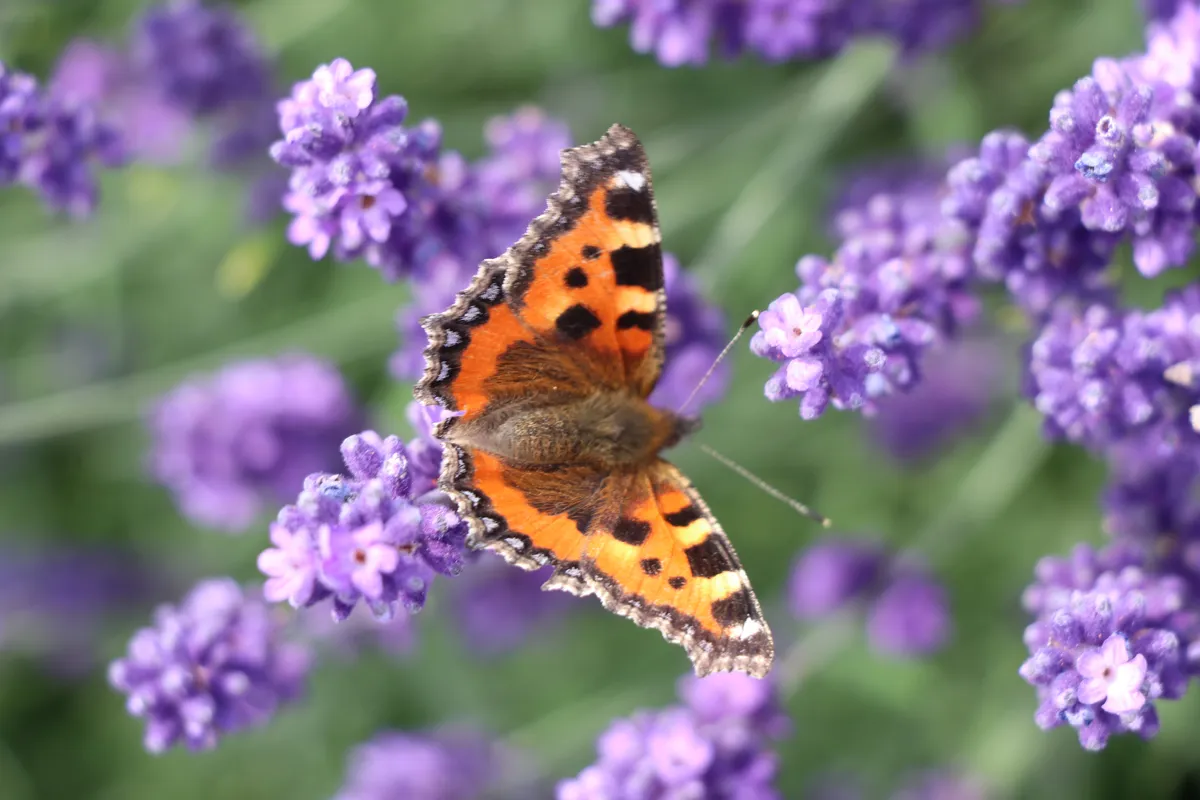
How to identify British caterpillars
Peacock (Aglais io)
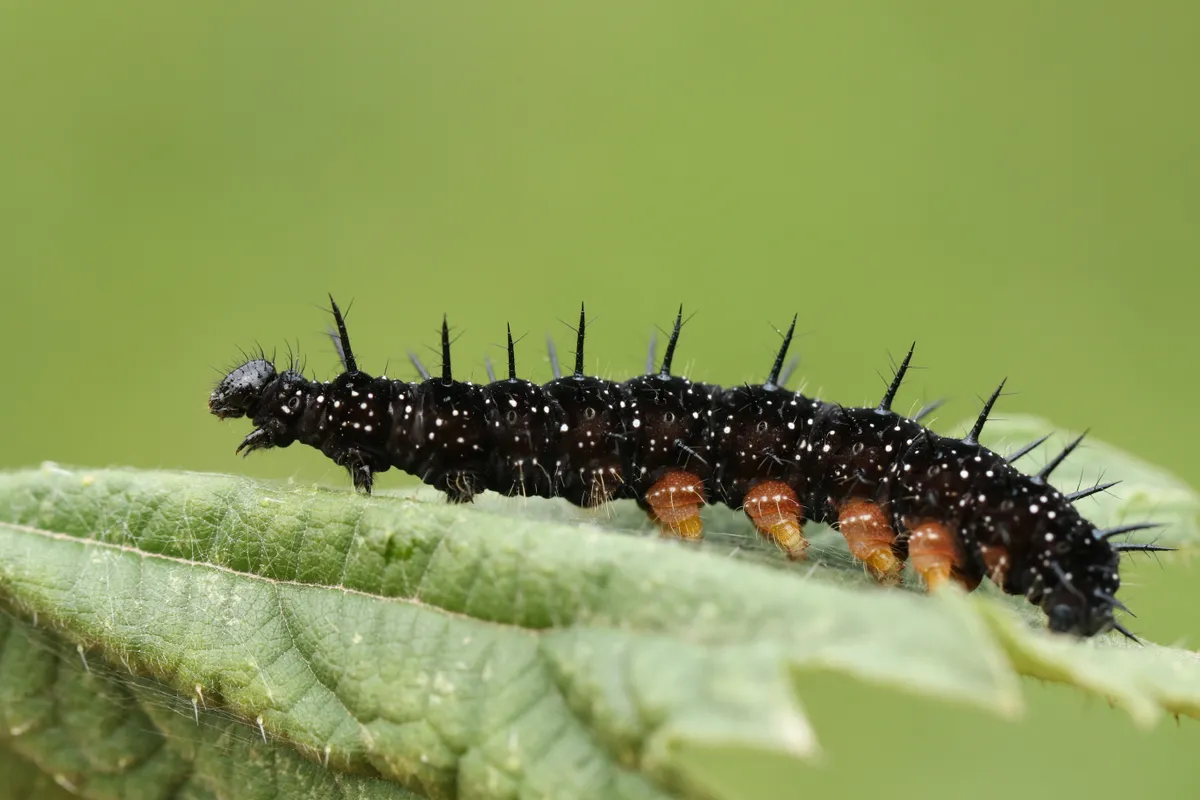
Batches of shiny black spiny caterpillars feeding on common nettle patches in warm, sunny places during May and June will produce peacock butterflies during July and August. These then hibernate, before mating and laying eggs in spring. Small tortoiseshell larvae are similar, but have yellow side markings.
Comma (Polygonia c-album)

The spiny and curiously white-saddled larvae of the comma butterfly feed on a variety of plants, in early summer and late summer broods. The leaves of partially-shaded nettles, elms, hops and garden currant bushes are favoured. Like the larvae of most butterflies, they are solitary creatures.
Orange-tip (Anthocharis cardamines)
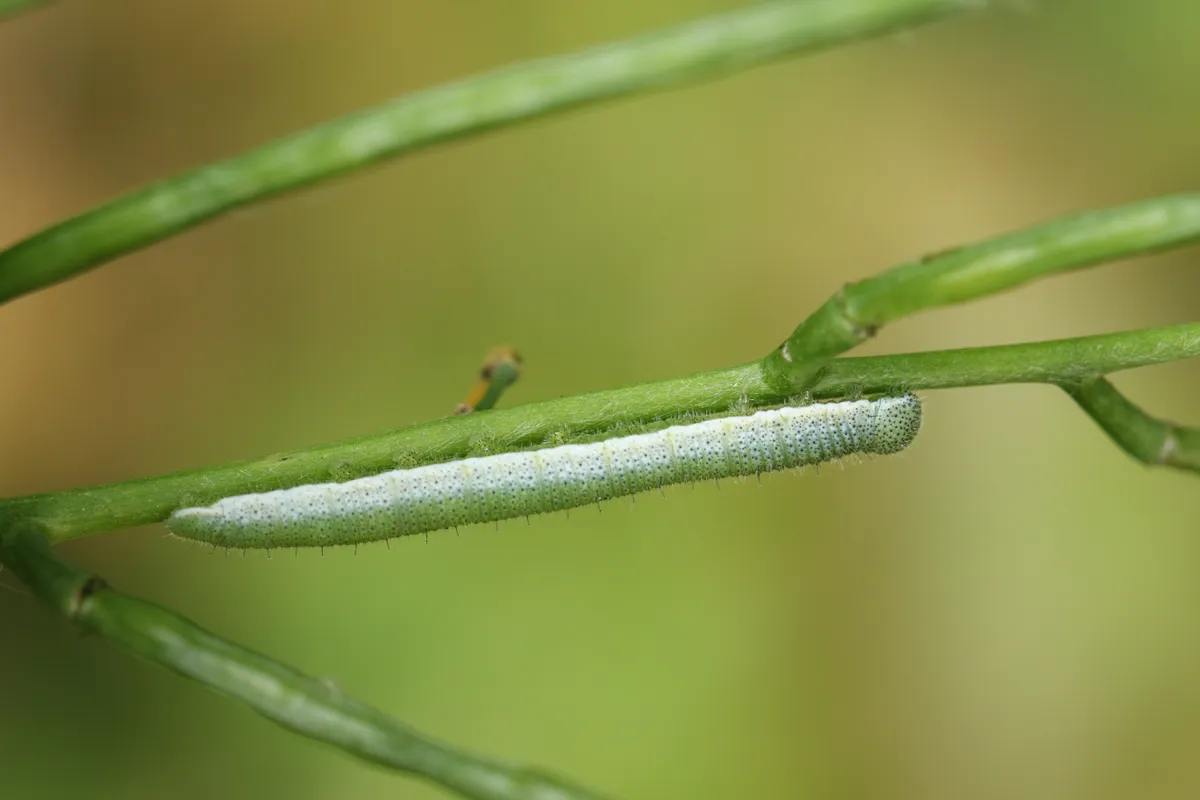
Orange-tip larvae are well camouflaged. They feed during May and June on the seed pods and leaves of a variety of cruciferous plants, especially garlic mustard. They mimic the green seed pods well, but many are eaten by blue tits. The survivors wander off to pupate on sturdier woody growths, overwintering there.
Large white (Pieris brassicae)
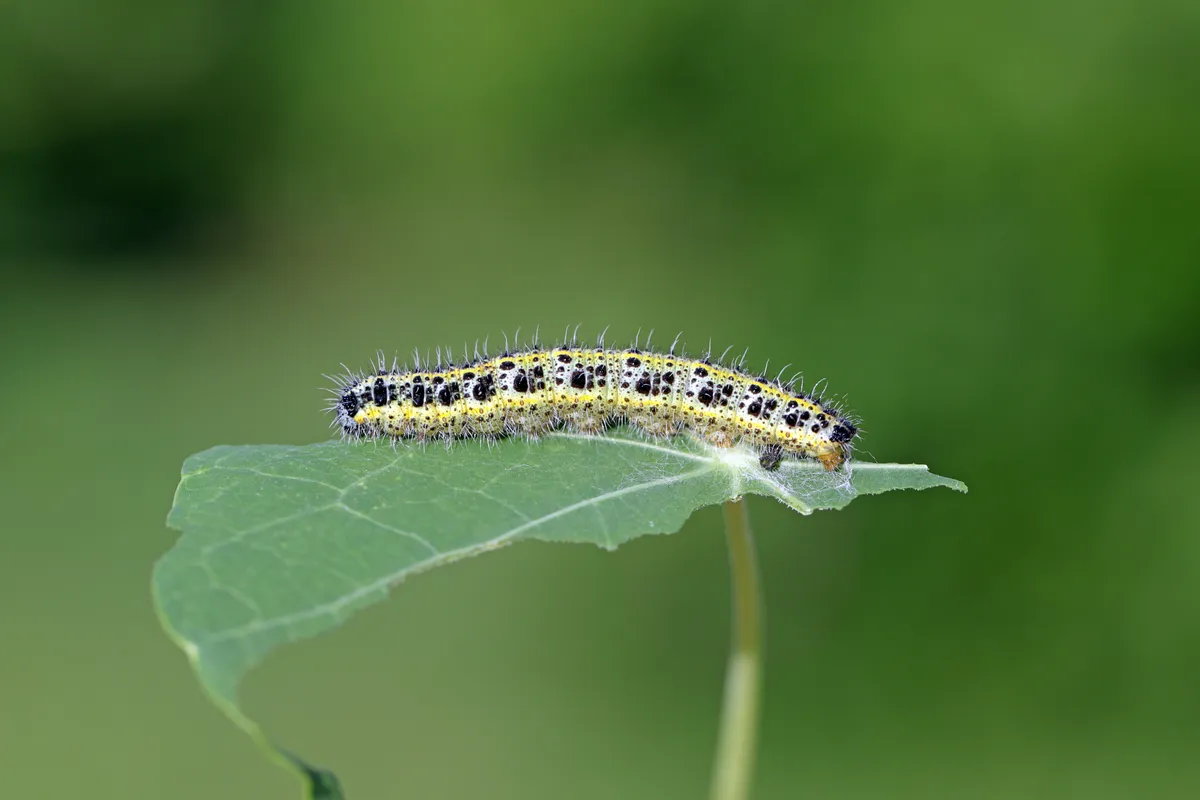
These familiar dark and yellowy caterpillars feed gregariously, and can devastate cultivated brassicas, though they love nasturtium leaves too. Strangely, the females rarely lay eggs on red cabbage. Small white caterpillars are green and solitary, and are less easy to spot. Finely net your cabbages, and grow nasturtiums.
Pale tussock (Calliteara pudidunda)

These distinctive furry lemony caterpillars, with a scarlet ‘tail’ spike, can be seen wandering over the ground to pupate in high and late summer. They fluoresce spectacularly under UV torchlight at night, whilst feeding on the foliage of a range of tree and shrubs, and can be spotted from 10m away.
Moth guide
Our moth guide looks at how to identify UK species, trapping and the best plants for attracting moths to your garden.
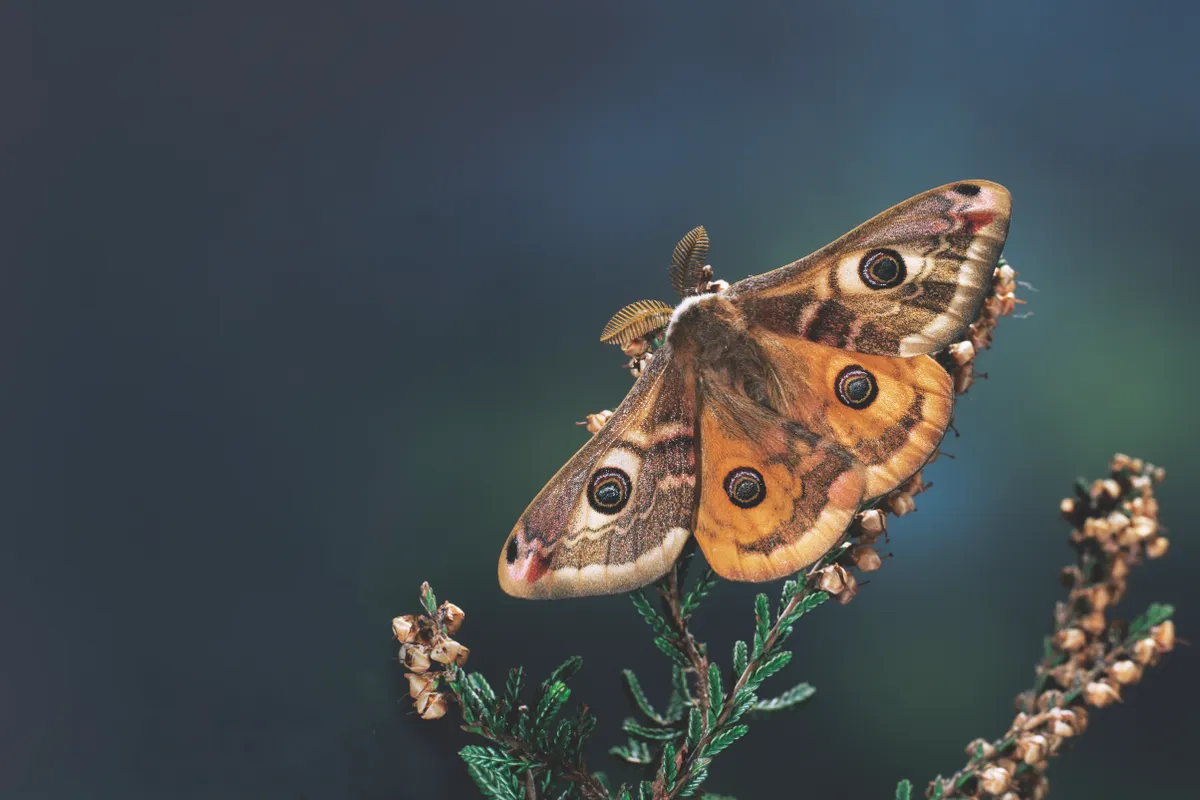
Elephant hawkmoth (Deilephila elpenor)

The huge and rather scary snake-eyed larvae of this hawkmoth are commonly found in August, feeding on fuchsias or wandering off to pupate. They eat a wide range of other plants too, both cultivated and wild. They pupate in the ground, and emerge the following May. They are utterly harmless.
Cinnabar (Tyria jacobaea)
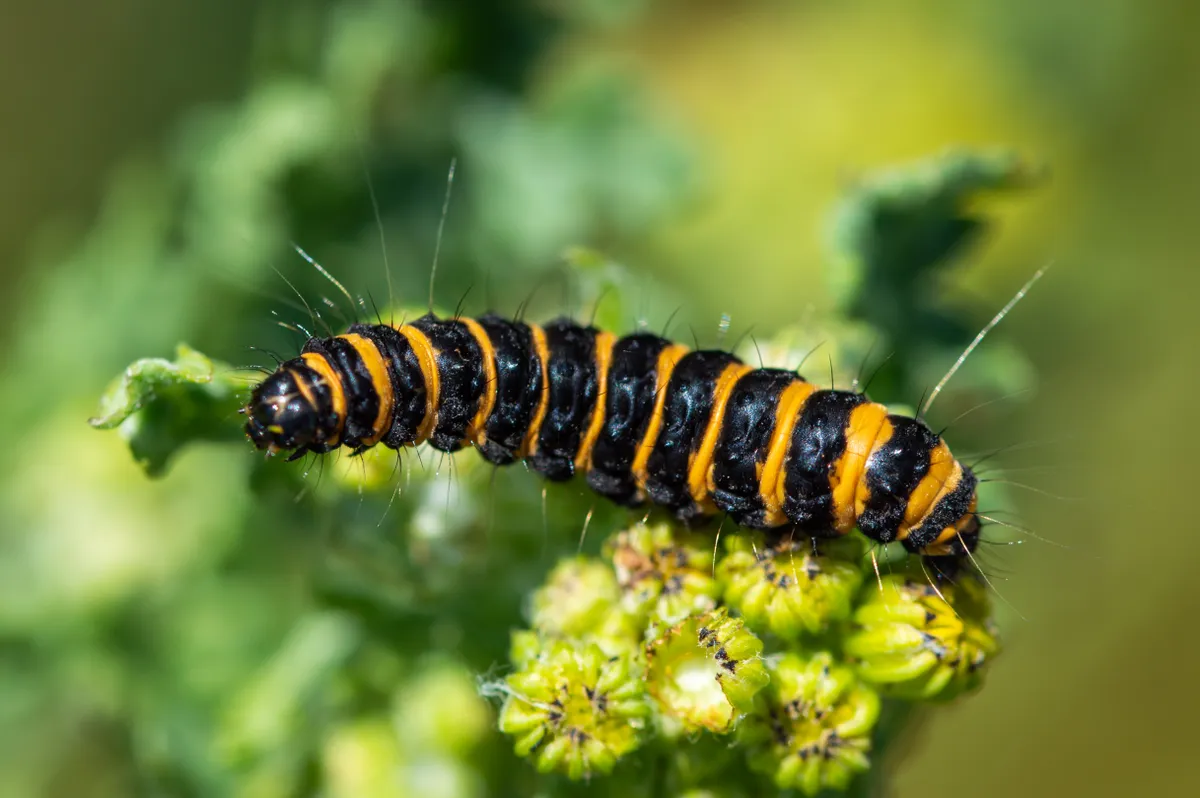
The yellow and black rugby shirted caterpillars of this once-common moth favour the flowers and leaves of common ragwort. They play a useful role in the biological control of this weed. Other, similar plants are eaten too, notably groundsel. Their danger colours suggest they are poisonous.
Scarlet tiger (Callimorpha dominula)
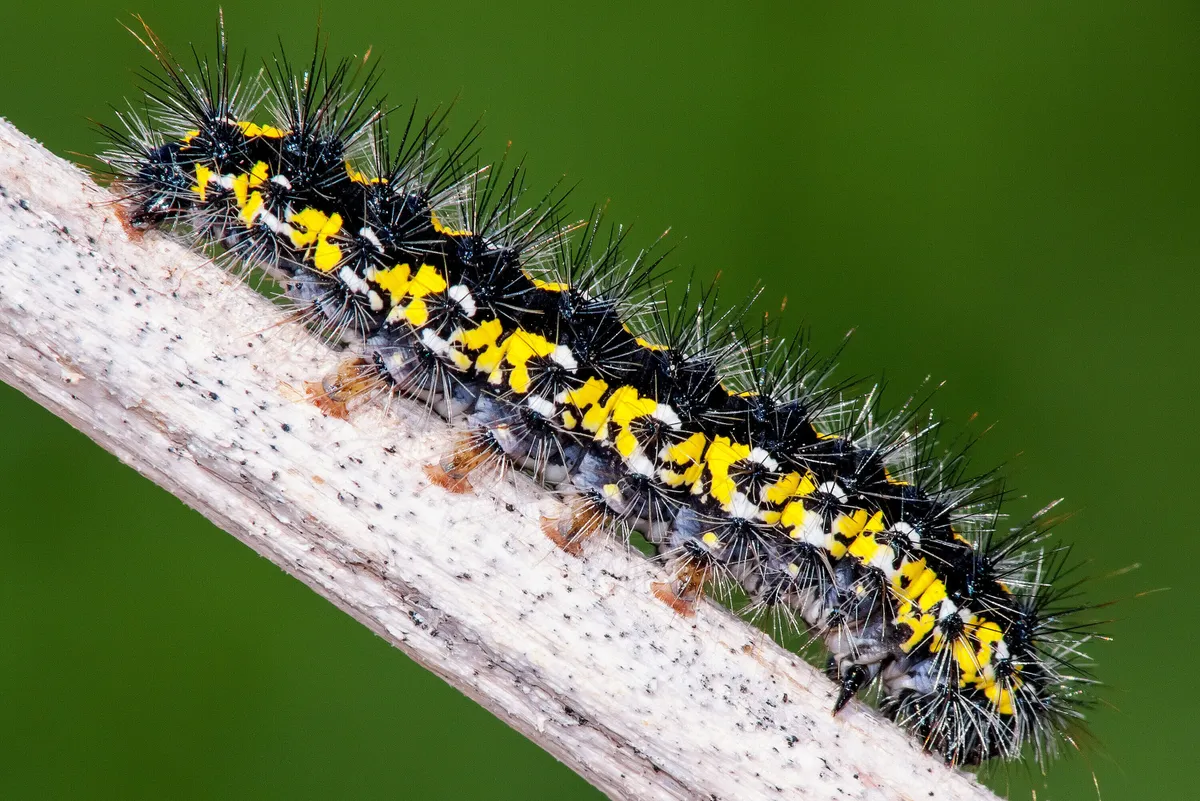
Formerly a scarce moth, which is now expanding its range. The handsome black and yellow caterpillars roam around in loose groups. They feed on many wild and cultivated plants, favouring alkanet, borage, hemp agrimony and nettles. In gardens, they can eat just about anything in spring, even invading greenhouses.
Large yellow underwing (Noctua pronuba)

Most larvae of this ubiquitous moth are a dull brown, but some are grey or a nondescript green. They feed on just about anything, and can be dug up during the winter. Many moth caterpillars look and behave just like this. To tell them apart, you have to breed them through.
Oak processionary moth (Thaumetopoea processionea)
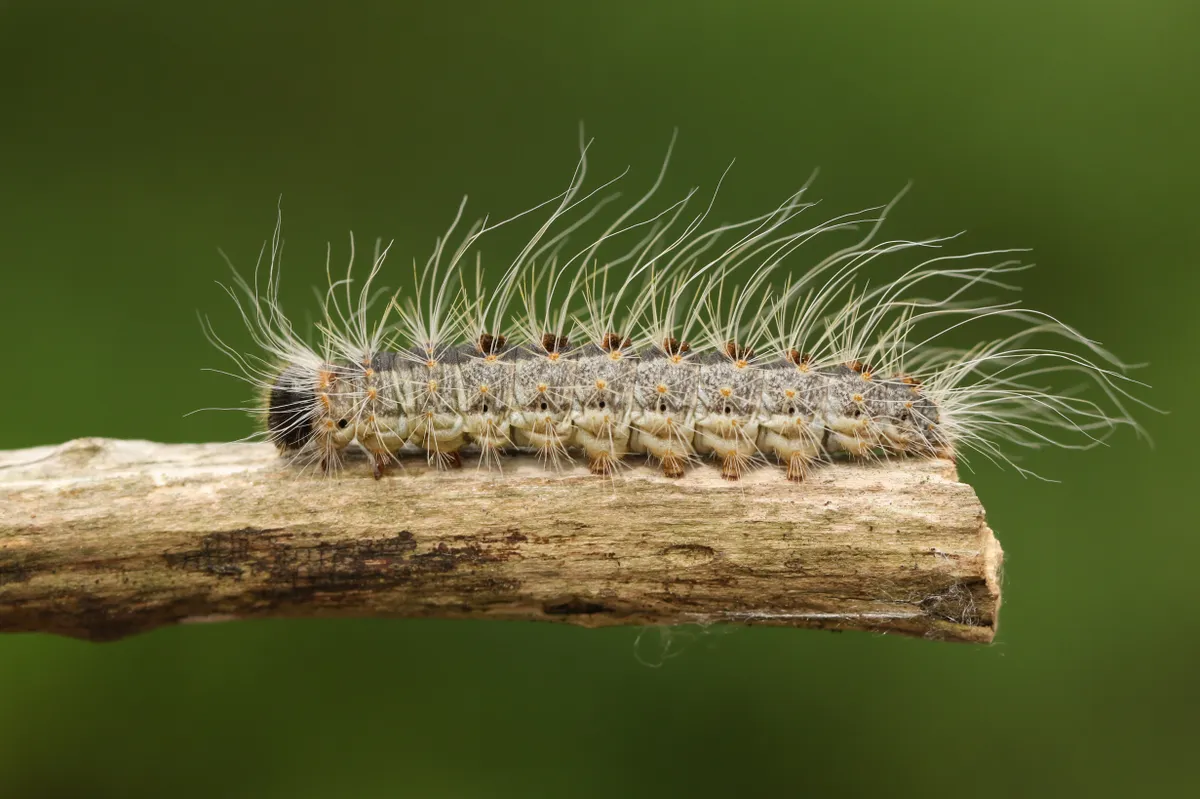
The barbed grey hairs that cover these larvae carry toxins that can harm people and animals. The larvae feed communally on oaks during June, wandering together in processions. It is a scarce moth, but it is spreading in the south-east, favouring parkland. A rare example of a dangerous caterpillar.
What do caterpillars eat?
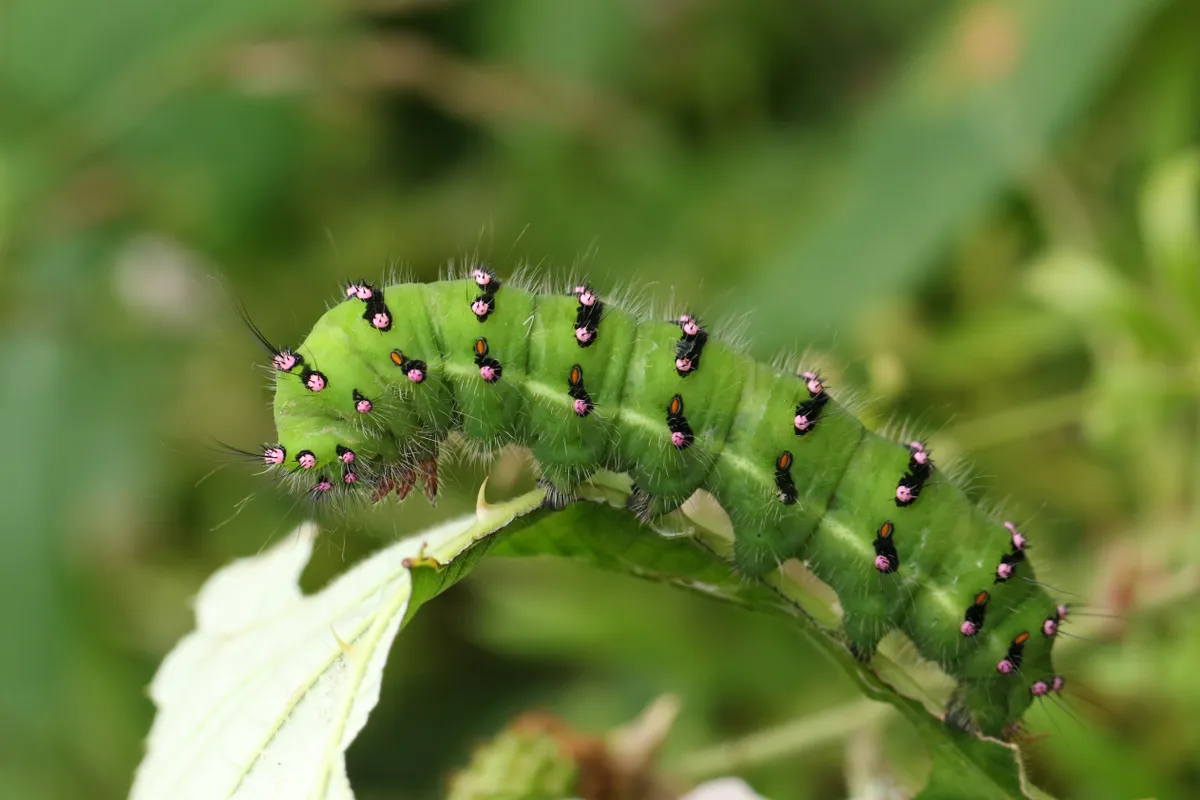
There is some truth in the children's book 'The Very Hungry Caterpillar' as caterpillars are well known for their ability to devour plant leaves, and indeed this makes up a large proportion of their diet. However, depending on the species, caterpillars may also eat flowers, stems and roots, as well as seeds, fruits, bark, twigs, moss, lichen, animal waste and, very occasionally, each other.
Are caterpillars poisonous?
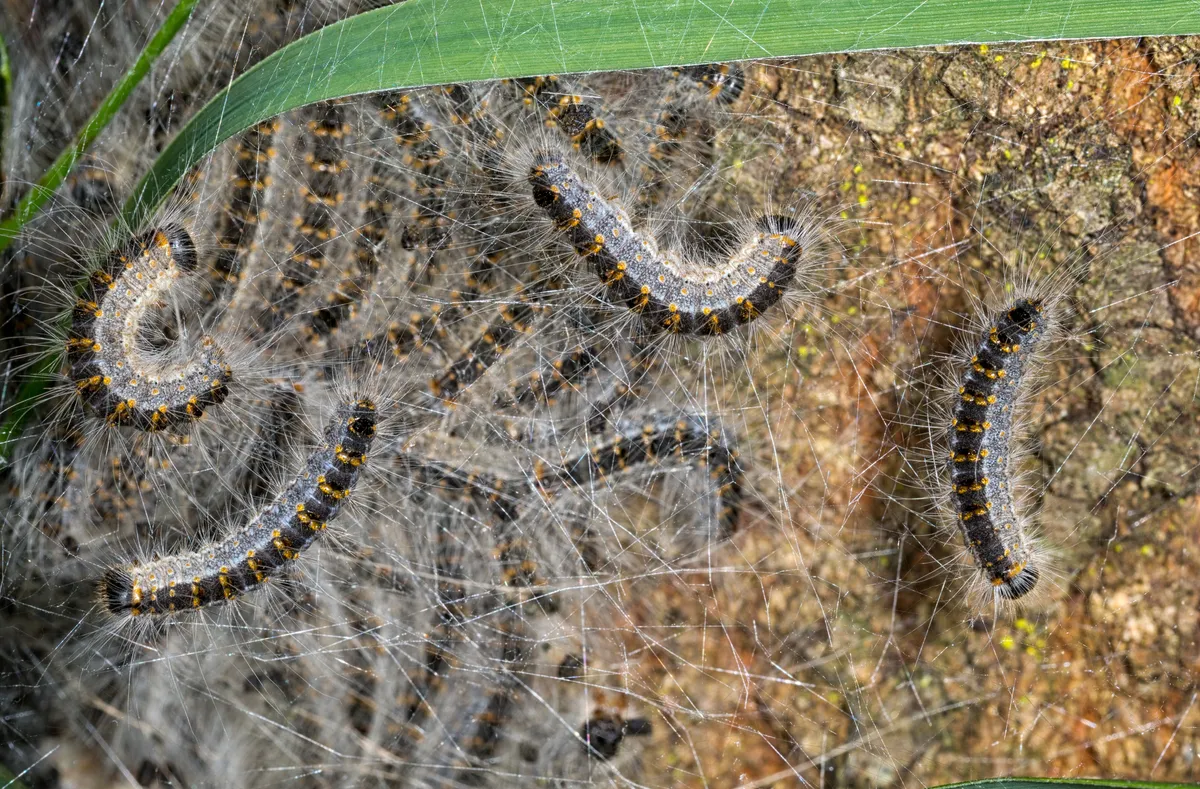
Most UK caterpillars are not poisonous, however there are one or two exceptions, including the oak processionary moth caterpillar. The hairs that cover these caterpillars hold toxins that can harm people and animals, causing irritation to the eyes and throat, as well as rashes on the skin.
Do all caterpillars turn into butterflies?
Not all caterpillars will turn into butterflies – some will undergo metamorphosis to become moths. Unless you're competent at identification, it can be tricky to tell whether a caterpillar will become a moth or a butterfly, but the transformation from a crawling caterpillar to a fluttering butterfly or moth is a fascinating process.
